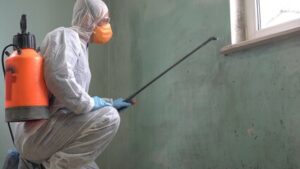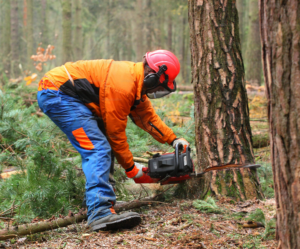You’ve been meaning to open your window for a fresh breeze but can’t because it’s stuck shut. Maybe you have drafts, mildew, or rot around your windows that need to be addressed.

Replacement Windows are a great option for homeowners who want to update their home without major construction work. They also offer many benefits including energy efficiency, improved curb appeal, and better noise reduction.
Energy-efficient replacement windows use better insulation to keep indoor temperatures stable without relying on frequent thermostat adjustments. The result is reduced energy consumption, which reduces utility bills. These cost savings can offset the initial investment, making replacement windows a smart financial choice.
New replacement windows come with a u-value rating that indicates how well the window will insulate and prevent heat from passing through. The lower the u-value, the more efficient the window. Look for a window with a low u-value to minimize the amount of heat that is transferred into your home from the outdoors.
A window’s insulating properties also help to minimize noise, creating a peaceful and relaxing living environment. This is especially important for homeowners who live near busy roads or in proximity to loud construction sites.
Another way that new replacement windows are improving the quality of life in homes is by reducing exposure to harmful UV rays. Many window manufacturers are using coatings on their products to minimize the penetration of UV rays into a home’s interior, which can fade carpet and furniture over time.
The style of replacement windows can also have a big impact on a home’s overall aesthetic. For example, homeowners are increasingly choosing windows without muntins—the vertical and horizontal grids that split a single pane of glass into sections—for a clean and modern look. Another trend is the use of narrow sashes—the part that holds the window’s glass—to create a Colonial-style look. Whatever your preference, US Window & Door experts can help you select windows that meet regulatory requirements and align with your aesthetic and functional needs. They can also provide advice on which styles and materials will best complement your home’s architectural design and match your budget.
Increased Curb Appeal
Old and outdated windows can be a real eyesore, and replacement windows offer an easy way to boost curb appeal. With a wide selection of colors and finishes, replacement windows can complement any home. They also allow for more natural sunlight, which improves the look and feel of a space. Additionally, new windows feature enhanced home security features, including reinforced frames and shatter-resistant glass. These features provide peace of mind and act as a deterrent against criminals.
There are three different types of replacement windows: sash kits, insert replacements, and full-frame replacements. Sash kits give the existing window frame new movable parts, including jamb liners and sashes. This is a less-invasive method of installation that requires little to no alteration of the surrounding trim. Full-frame replacements, on the other hand, replace the entire window and frame. This option is best suited for situations where the existing frame is damaged or when a different window style is desired.
When choosing replacement windows, homeowners should consider their budget constraints, design preferences, and long-term goals for their homes. For example, homeowners with financial constraints may choose insert replacements to minimize costs. Full-frame replacements are more expensive but offer greater energy efficiency and durability.
The installation process begins with an assessment by a professional to determine whether the existing window frames are suitable for replacement. Detailed measurements are taken to ensure a precise fit for the new window. The area around the window is then prepared for the installation process by covering floors, walls, and trim with drop cloths. The old window sashes and hardware are removed, and the new window is fitted into place. The resulting installation looks as if the window was always part of the house.
Increased Home Value
Window replacement is one of the most significant home improvement projects homeowners can undertake, and it’s often a wise investment. A well-designed and executed project will boost resale value and add long-term comfort and energy efficiency.
The first impression a potential buyer will make about your home is the condition of your windows. If they’re old, dingy, or cracked, they’ll make your house look outdated and unappealing. Replacement windows can give your home a fresh new face and improve its curb appeal, attracting more buyers and increasing its market value.
Modern windows are designed with the needs of potential homeowners in mind. Many feature advanced insulation that minimizes heat transfer and lowers energy bills. Additionally, ENERGY STAR windows come with a variety of features that provide additional benefits such as noise reduction and improved security.
Homeowners also want to maximize light and views when choosing replacement windows. As a result, they are driving the trend toward sleeker styles, such as flush flange and insert replacement windows that install directly into the existing frame. Other popular options include Colonial-style windows without muntins, the vertical and horizontal grids that split a full pane of glass into sections, as well as slimline windows with narrow sashes (the part that holds the glass).
Another factor in calculating your ROI on replacement windows is whether or not you can claim rebates offered by local utility companies for ENERGY STAR products. You can find these rebates by visiting the Database of State Incentives for Renewables and Efficiency. These savings can help offset the cost of your new windows and make them more affordable. Brennan Enterprises has a team of expert contractors ready to transform your home with new replacement windows and doors. Contact us today to schedule your no-pressure, in-home consultation.
Increased Home Security
If your windows are old and flimsy, it may be time to consider replacing them. Modern replacement windows are designed to keep your home safe and secure. They often feature reinforced frames, advanced locking mechanisms and impact-resistant glass. The latter is especially important as it makes it much harder to break in. It also reduces the risk of injuries for both you and potential intruders. Additionally, many new replacement windows are designed to integrate seamlessly into home security systems. This allows you to monitor your windows remotely and receive instant alerts in case of any security breaches.
Another way new windows make your home safer is by reducing outside noise pollution. Traffic, sirens, lawnmowers and construction can all be distracting and hard to concentrate on when they are blasting through your window. With insulated frames and triple-pane glass, replacement windows can significantly cut down on this annoying outdoor noise.
In addition to reducing the noise pollution inside your home, replacement windows can help to improve your indoor air quality. This is because they can reduce the amount of dust and allergens that enter your home from outside. Ultimately, this means you can breathe easier and enjoy your home more comfortably.
Replacement windows can be a great option for homeowners looking to upgrade their homes without major renovations. They are a cost-effective and efficient way to increase energy efficiency, improve curb appeal, and feel more comfortable at home. In addition, they can provide a variety of other benefits such as improved functionality, visual appeal, and sound dampening. So if you are in the market for new windows, contact a professional to learn more about your options.
Better Noise Reduction
Noise pollution is a real concern for many homeowners. Whether from noisy neighbors, loud traffic, or lively nightlife, excessive external noise can impact your quality of life and prevent you from getting a good night’s sleep. Installing replacement windows can help mitigate these issues by providing a quieter living environment, especially for those living in urban areas.
Modern replacement windows are designed to be effective sound barriers that minimize outside noises. One of the main reasons why they are able to achieve this is due to their robust frame materials and tight seals. A good fit is crucial to reducing unwanted noises as gaps and cracks can let in air, water, and even dust.
In addition, the materials used to manufacture these new windows are often environmentally responsible and use sustainable production processes. This helps to reduce carbon emissions, which is good news for the planet and your wallet alike.
Another reason why these new windows are effective at minimizing external noises is due to their advanced sound control technology. Many of these windows utilize double or triple-pane glass with a space between the panes that is filled with air or gas, which effectively disrupts and absorbs sound waves to create a quieter living environment.
Additionally, the insulated frames and tight seals that are found in these replacement windows can significantly reduce noise from outside. This is particularly beneficial for those who live in urban areas or near busy roads as these exterior noises can interfere with your ability to get a good night’s sleep. In turn, this can lead to heightened stress levels and lack of focus for those who work from home or have young children that require a quiet environment for rest and sleep.








